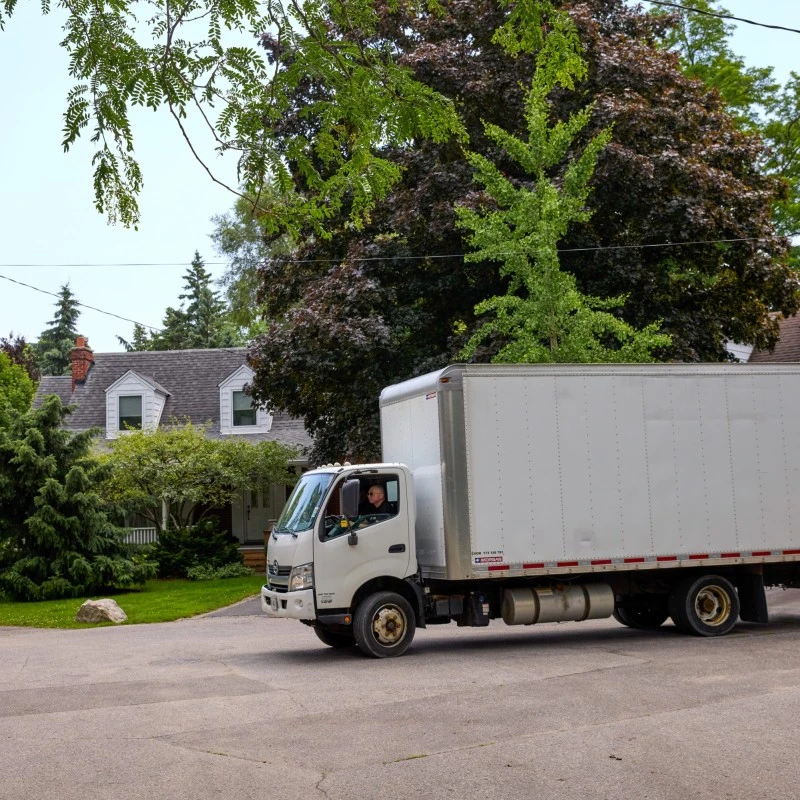Understanding work permits and Visa options for skilled workers in Canada


There’s a great need for skilled workers in Canada. Canada has a fair and welcoming immigration system—having workers contribute their valuable skills helps support the Canadian economy, while supporting Canada's cultural diversity. Work permits are one of the available pathways towards obtaining residency.
This demand for workers is due to a few different factors. Many skilled workers are nearing retirement age. Construction, infrastructure, and renovation projects are also increasing due to Canada’s growing population. As time passes and engineering and design technology improve, older buildings eventually need renovations and safety upgrades.
Additionally, sought-after areas of Canada, such as most major cities and tourist hot spots, are dealing with severe housing shortages. Only a minority of locals can afford to rent or own homes in popular areas, and there’s a huge need to build up the housing supply.
If you’re a skilled worker looking to apply for a permit to work in Canada, you’ve come to the right place. Use this guide to get clear information on visa and work permit pathways as a skilled worker in Canada. By completing all of the administrative steps with close attention to detail, you will be able to put your valuable skills to use in Canada in no time.
Types of work permits in Canada
 Employer-specific Work Permit
Employer-specific Work Permit
Some foreign workers are lucky enough to already have a Canadian employer that wants to hire them.
This type of permit allows you to work in Canada according to specific conditions that are stated on your permit:
-
The name of your employer (who you are working for).
-
The duration of your stay and work in Canada.
-
The location where you can work (if applicable).
The most common permit is the Temporary Foreign Worker Program (TFWP). Before you apply for the permit, your employer must provide you with a copy of your employment contract and one of the following:
- A copy of your labour market impact assessment (LMIA). Also called a “confirmation letter”, the LMIA is a document stating that there is a need for a worker from outside of Canada to fill the job. It will also state that there were no resident Canadian workers to fill the position.
- An offer of employment number. This is for workers who are LMIA-exempt for several reasons, including but not limited to international agreements, providing significant benefits to Canada and are a dependent of a skilled foreign worker.
Open Work Permit
These permits are a little less common, but allow you as the worker the option to choose where you want to work.
An open work permit lets you work for any employer. However, certain employers are not eligible to hire foreign workers under work permits:
-
Those employers that are listed as ineligible on the list of employers who’ve failed to comply with the conditions
-
Any adult-only businesses such as strip clubs, escort services or erotic massages
Open work permits are only granted if:
-
You’re an international student who graduated from a designated learning institution and are eligible for the Post-Graduation Work Permit Program.
-
You’re a student who’s no longer able to meet the costs of your studies (destitute student).
-
You’ve an employer-specific work permit and are being abused or at risk of being abused, in relation to your job in Canada.
-
You’re a dependent family member of someone who applied for permanent residence.
-
You’re a family member of certain foreign workers in Canada.
-
You’re the spouse or common-law partner of an international student.
-
You’re the spouse or common-law partner of an applicant of the Atlantic Immigration Program
-
You’re a refugee, refugee claimant, protected person or family member.
-
You’re under an unenforceable removal order.
-
You’re a temporary resident permit holder.
-
You’re in Canada and being sponsored as a spouse, common-law partner, conjugal partner or accompanying dependent child.
-
You’re a Quebec investor who received a Quebec Notice of Intent to Select
Each of these situations requires you to meet additional criteria to be eligible.
Since open work permits aren’t job-specific, your employer doesn't need to provide an LMIA or proof of an offer of employment through the Employer Portal. They also don’t need to pay the employer compliance fee.
That being said, there is an extra fee–most of the time, the permit holder will have to pay an open work permit holder fee on top of the regular work permit fee. There’s a fee list that shows the most up-to-date work permit application fees.
Open work permit restrictions
Certain restrictions may be listed on your open work permit. These restrictions may limit the type of job you can hold. For example, certain jobs need a medical exam before you can fill the position.
Another example is location restrictions. If you have an open work permit under the provincial nominee class, you may only be able to work in a specific province. Visa options for skilled workers
Canada benefits from and welcomes skilled workers from outside the country with open arms. Therefore, there are several options for obtaining a work visa. Read this section carefully to know which option(s) you can apply for.
Express Entry System

Express Entry is a fast and accessible pathway to permanent residency for skilled workers, tradespeople and individuals with Canadian work experience.
It covers three main immigration programs:
- The Federal Skilled Worker Program (FSWP)
- The Federal Skilled Trades Program (FSTP)
- The Canadian Experience Class (CEC)
The system uses a points-based method called the Comprehensive Ranking System (CRS) to rank applicants.
Points are given based on the following factors:
-
Age
-
Education
-
Work experience
-
Language skills
-
Whether you’ve got a job offer in Canada or a provincial nomination through the Provincial Nominee Program (PNP).
Once you're eligible, FSWP and FSTP applicants enter the Express Entry pool, where you’re ranked based on your CRS score. Those with the highest scores receive invitations to apply for permanent residency in Canada.
Federal Skilled Workers Program
To qualify for the Federal Skilled Worker Program (FSWP), you’ll have to meet specific requirements in areas such as:
-
Work experience
-
Language skills
-
Education
-
Financial stability
As an applicant, you must have at least one year of full-time, continuous skilled work experience in the past 10 years, in a job classified under NOC TEER 0, 1, 2, or 3.
There is no age limit, but younger applicants earn more points in the Comprehensive Ranking System (CRS). Points are also awarded based on work experience, education, and language skills.
You’ll need to show that you've enough savings to support yourself and your family when they arrive in Canada, unless they already have a job offer.
Your score must be no less than 67 out of 100 on the FSWP selection grid, which assesses factors like work experience, education, and adaptability.
Federal Skilled Trades Program (FSTP)
This program is similar to the FSWP, but geared towards tradespeople. Again, the eligibility criteria are specific and include:
-
Work experience
-
Job offers or certification
-
Language skills
-
Financial stability
To qualify as an applicant, you must have at least two years of full-time work experience (or 3,120 hours total) in a skilled trade within the last five years. Your work must be paid and fall under eligible National Occupational Classification (NOC) groups.
You’ll also need the following to qualify:
- Either a valid job offer for at least one year of full-time employment or a certificate of qualification issued by the Canadian provincial, territorial, or federal government.
- Language proficiency is required.
- Formal education isn’t a requirement, but higher education can improve one’s ranking.
- Just like with the FSWP, adequate savings are required as well.
- Applicants cannot have criminal, medical, or security issues that would prevent entry.
Keep in mind that Quebec selects its own skilled workers. If nominated through the Provincial Nominee Program (PNP), applicants must settle in the province or territory that nominated them.
Canadian Experience Class (CEC)

Let’s say you’ve already had the chance to work in Canada for a little while. The CEC is for skilled workers who have Canadian work experience and want permanent residency.
First, you’ll need to check if your job meets the requirements for skilled work experience by finding out the job’s National Occupational Classification.
To be eligible, your skilled work experience must:
-
Be in one or more of the NOC categories. These include Training, Education, Experience, and Responsibilities (TEER) 0, 1, 2, or 3. Your experience can be in more than one NOC.
-
Be gained by working in Canada while authorised to work under temporary resident status.
-
If you worked remotely, you must have been physically in Canada while completing work hours and working for a Canadian employer.
-
Show that you performed the actions in the lead statement of the NOC job description, and most of the main duties listed.
-
Be paid work, as in you were paid wages or earned commission. Volunteer work or unpaid internships don’t count.
-
Be at least one year of work or 1,560 hours in total (30 hours per week), within the three years before you apply.
Ways to meet the 1,560-hour requirement
- Full-time at one job: Up to 30 hours a week for 12 months = 1 year full-time (1,560 hours).
- Equal amount in part-time work: For example, 15 hours a week for 24 months = 1 year full-time (1,560 hours). You can work as many part-time jobs as needed to meet this requirement.
- Full-time at more than one job: 30 hours a week for 12 months across multiple jobs = 1 year full-time (1,560 hours).
Self-employment and work experience gained as a full-time student don’t count for this program.
Further requirements for CEC
You also have to pass tests in either English or French and meet the minimum score in writing, reading, listening and speaking.
There aren't any education requirements for the CEC, but as usual, education credentials help to improve your rank in the pool.
This seems obvious, but you must be admissible to Canada. Some people aren’t allowed to come to Canada for reasons such as security, criminal records, or medical issues.
Final location details
You must plan to live outside the province of Quebec—they select their own skilled workers. If you plan on living in Quebec, refer to the Quebec-selected skilled workers program for more details.
When you fill out your profile, you’ll be asked where you plan to live in Canada, but you are not required to settle in that province or territory. However, if you’re a Provincial Nominee, you must settle in the province or territory that nominated you.
Find out more about the Comprehensive Ranking System (CRS) and points-based selection.
Provincial Nominee Program (PNP)
 The Provincial Nominee Program is designed for workers who have the skills, education, and work experience needed to support the economy of a specific province or territory.
The Provincial Nominee Program is designed for workers who have the skills, education, and work experience needed to support the economy of a specific province or territory.
Each province and territory has its own streams, which are immigration programs that focus on certain groups of people. These programs have different requirements based on the needs of the region.
A province or territory may have a program stream that targets specific groups, such as students, business people, skilled workers, or semi-skilled workers. These streams help match immigrants with job opportunities and industries where their skills are most needed. Below are some examples of PNPs.
Ontario Immigrant Nominee Program (OINP)
The OINP has several streams, including:
-
Human Capital Category (for skilled workers, French-speaking workers, and international graduates).
-
Employer Job Offer Category (for workers with job offers in Ontario).
-
Business Category (for entrepreneurs looking to start or buy a business in Ontario).
British Columbia Provincial Nominee Program (BC PNP)
The BC PNP includes:
-
Skills Immigration (for skilled and semi-skilled workers in high-demand jobs).
-
Express Entry BC (a faster process for eligible candidates who qualify for Express Entry).
-
Entrepreneur Immigration (for business owners and investors).
Global Talent Stream (GTS)
 Sometimes, specific sectors in Canada need skilled workers as fast as possible.
Sometimes, specific sectors in Canada need skilled workers as fast as possible.
The Global Talent Stream is an expedited program under Canada's Temporary Foreign Worker Program that allows fast hiring of highly-skilled foreign workers to fill specialised positions, particularly in industries like technology and engineering, when there aren’t any qualified Canadian citizens or permanent residents available.
The program offers expedited processing of Labour Market Impact Assessments (LMIA) and work permit applications, aiming for a two-week processing time.
Intra-Company Transfers (ICT)
If you work for a multinational corporation, there’s another way to get a Canadian work permit.
Canada's Intra-Company Transfer program is part of the International Mobility Program. The ICT allows multinational companies to temporarily transfer high-skilled employees to their Canadian branches, subsidiaries, or affiliates, enabling them to obtain a work permit without needing a Labour Market Impact Assessment.
Employees have to be employed by a foreign multinational company that has a qualifying relationship with a Canadian company (parent, branch, subsidiary, or affiliate). The program is designed for transferring executives, managers, and specialised knowledge workers.
Applying for a work permit and pathways to permanent residency
Obtaining a Canadian work permit is serious business, and you’ll want to make sure everything goes as smoothly as possible. When you are applying for your appropriate work permit:
-
Double (and triple) check that your qualifications meet Canadian standards.
-
Make sure that your documents are in order and all information is accurate and up-to-date.
-
If you feel stuck or confused, seek professional immigration advice. You don’t want to risk making a mistake.
Canada values work ethic, adaptability and diversity. Having work experience in Canada is a valuable asset that lends itself to eventually gaining permanent residency. Express Entry and Provincial Nominee Programs are common routes to becoming a permanent resident and, possibly one day, a citizen of Canada.
What do our customers say?

 Employer-specific Work Permit
Employer-specific Work Permit

























